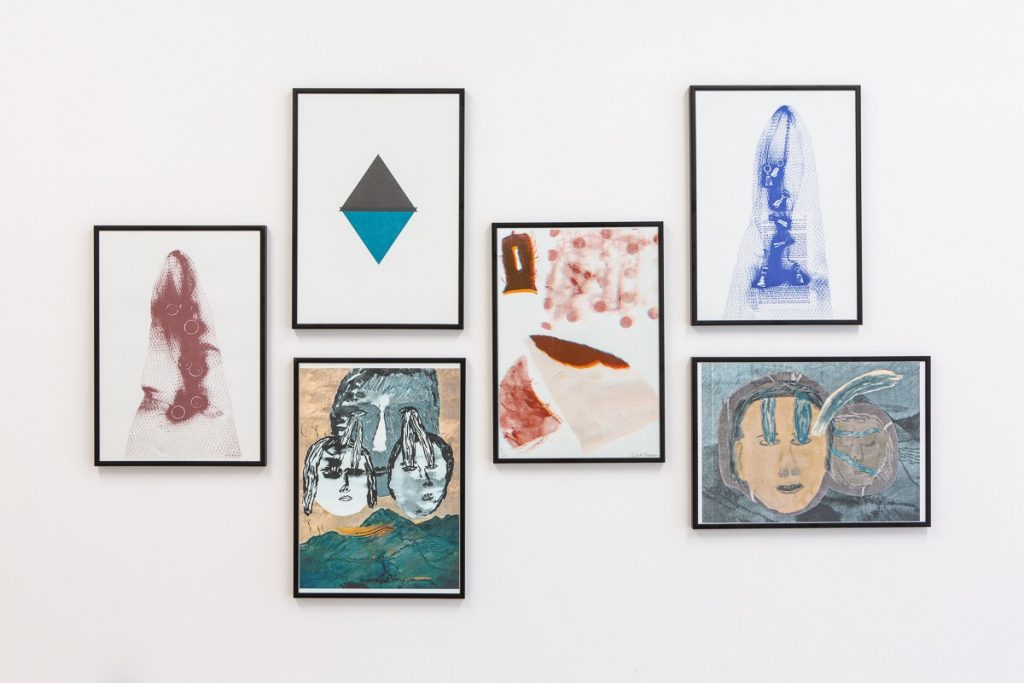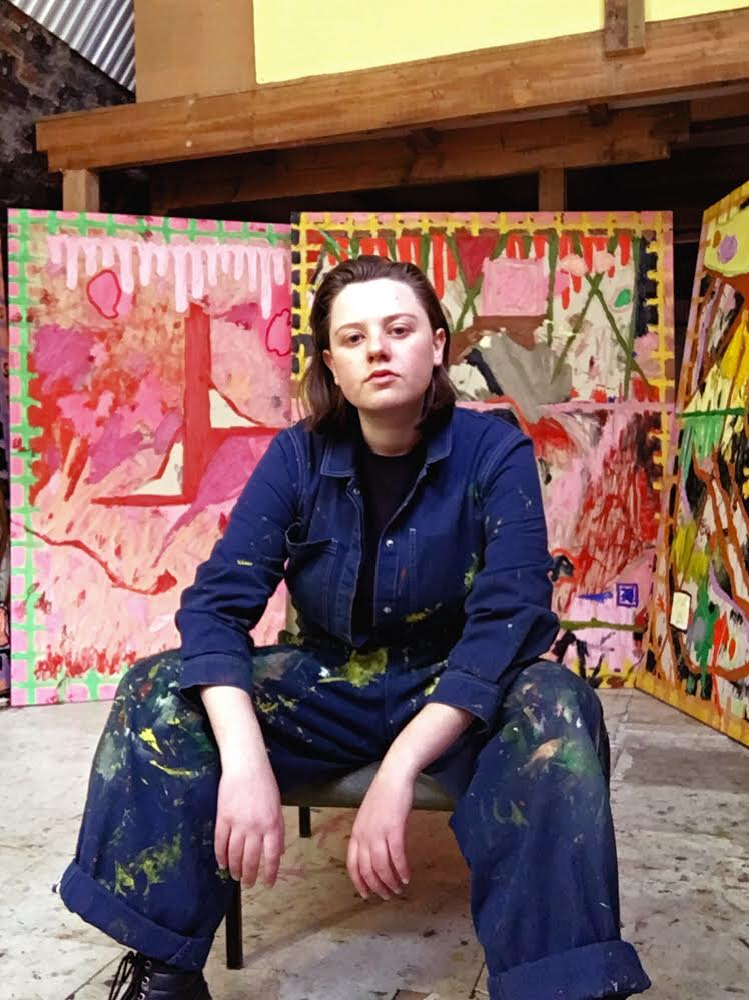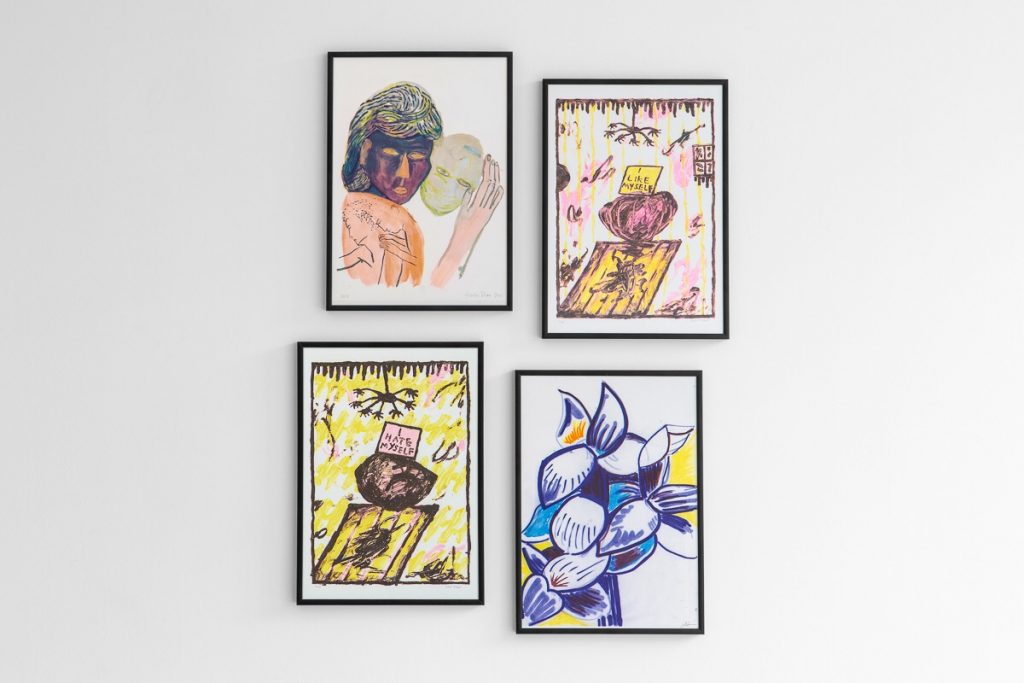
Introducing ‘Her Prints’
‘Her Prints’ promotes early career female artists, giving them a platform to display their work and train in new areas.
On 6th June 2019, ‘Her Prints’ launched with an exhibtion curated by Kate Neave at Koppel Project Central, Soho. The show included risographs by 12 artists.
I caught up with three of the participating artists to hear how they grappled with the risograph technique and their view of ‘her-ness’ in 2019.

3x Questions for the Artists:
Lucy Whitford
1. How did you find the risograph process ? Is it one you will be returning to?
The Riso RP 3700 has been such a great machine to work with. I was keen to see how my practice was going to translate into this medium and I’ve found there are many similarities with my approach to creating work with the riso and how I work with clay. I’m drawn to processes which bring their own characteristics and quirks to my practice. I hand my clay pieces over to the elements and there’s always something unexpected that occurs in the drying and firing processes, so too with the riso printing process . The riso offered me the opportunity to experiment and develop my practice in a totally new medium and my clay works have come to life in a really different and surprising way using this process.
2. In an age in which gender and identity are opened to analysis as never before, and gender pronouns are questioned, what does your ‘her-ness’ mean to you, and how do you think it was made manifest in this printing project?
Her-ness in the context of my risograph prints manifests as echos, traces, mythologies and imprints of ‘her’ and the rupture felt with the absence or loss of ‘her’.
3. What was your biggest surprise during the project ?
The Riso RP3700 is such an accessible machine. It can pick up and print such a wide variety of objects and marks using the scan bed and also has the technology to print straight from a file on your laptop or phone. The riso allowed me to be playful and work quickly and meant the making process kept up with my creative process. I found I was able to rapidly work through thoughts and ideas I had been planning and preparing for weeks in my studio beforehand. Things I thought were going to work didn’t work at all and I was able to learn from my tests and experiments instantly. Working so quickly meant I had time to experiment a lot using the scan bed layering clay forms and textures with pencil, ink and fabric.
I was also really surprised by the qualities of the soy based inks used in risograph printing. They have a beautiful translucency that makes them really interesting to work with, particularly when I was layering up different marks and images – there’s a richness to the layering of inks and the range of marks that I’d not expected.

1. How did you find the risograph process ? Is it one you will be returning to?
I loved the risograph process. Once I got my head around the technicalities, I realised how much space there is to experiment and be playful with the process. I love how painterly it was in terms of capturing textures and layers of colours.
2. In an age in which gender and identity are opened to analysis as never before, and gender pronouns are questioned, what does your ‘her-ness’ mean to you, and how do you think it was made manifest in this printing project?
My ‘her-ness’ means that I recognise that women have the power to do anything they want and that I look to women for for support, guidance and inspiration and I celebrate the women in my life who raised and educated me. It manifested itself in this project particularly through the theme of the work – ‘I hate myself and ‘I like myself’. I think universally everyone can relate to this back and forth of self loathing and self appreciation but women are particularly targeted and brainwashed through the patriarchy, media and male gaze. It’s just part of our psyche to be critical of ourselves and think we’re not good enough or not capable enough. That’s why this project is so important because so many women in have been overlooked and written out of history. We are here to occupy space and be documented.
3. What was your biggest surprise during the project ?
My biggest surprise was how present the artist’s hand still is in the process and the final product. Even after passing through photoshop and the printer, every print has a slightly different finish. I surprised myself by learning a whole new technique and gaining confidence in it so quickly and producing two really solid prints.

1. How did you find the risogrpah process ? Is it one you will be returning to?
I found the riso process to be unexpectedly challenging. It requires a lot of technical knowledge and skill in order to create something specific. I am an oil painter and am used to painting wet on wet. With print making, riso included, each layer has to be considered before printing because once it goes through the machine it is set. Ultimately I used my time with the riso printers to explore how to create a similar image to something I would paint through a completely different medium. It has allowed me to think about the relationship of larying in painting and that has changed my practice a bit and I am grateful for that. For now I am intending to focus solely on painting in my studio.
2. In an age in which gender and identity are opened to analysis as never before, and gender pronouns are questioned, what does your ‘her-ness’ mean to you, and how do you think it was made manifest in this printing project?
Through participation with this project I have had a lot of interesting conversations about being an artist and also being female. The two are inherently tied together even if I do not consider my gender identity to be a cognizant part of my work. I am an artist and I am also a woman. I made a print of flowers for an all female project and that raised discussion about what a flower symbolizes in both art history and with femininity. I am more concerned with their physical form and what they allow for in a painting with colour and line relationships, but through participation in this project I am now more considered about how I decide I participate in that art historical context. I think everyone that participated is an amazing artist with varying practices- the uniting factor is our gender and that can both uniting but perhaps limiting as well.
3. What was your biggest surprise during the project?
I became increasingly frustrated with riso printing as it was a new process I could not master in such a short time and learned that that caused me a lot of internal struggle within an art-making context.





